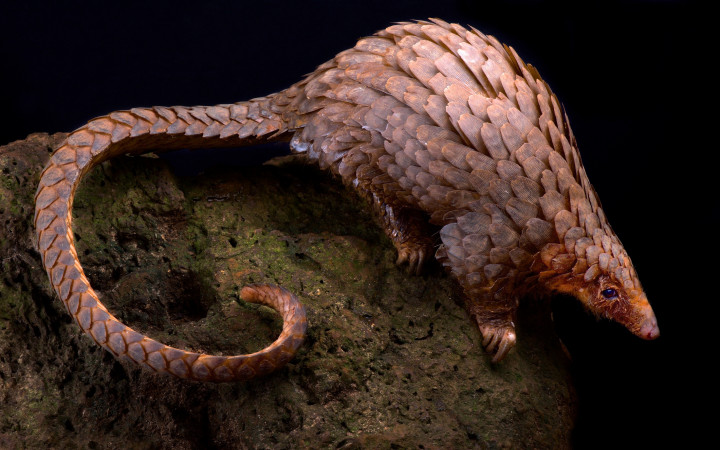Today’s Wonder of the Day was inspired by Ibrahim. Ibrahim Wonders, “What is a pangolin?” Thanks for WONDERing with us, Ibrahim!
We were wandering through the Wonderopolis jungle the other day when we overheard some animals discussing a stranger in their midst:
Lion: What is that thing? It's eating ants. Is it an anteater?
Anteater: Nope! It's not one of us. It's got scales. Is it an armadillo?
Armadillo: Nope! I've never seen one of those before. It looks like an artichoke.
Monkey: A walking vegetable? Nonsense! I'm going to just ask it. Hey buddy! What are you?
Lion: Did you see that? It just rolled into a ball. Maybe it's a living soccer ball!
We had to get going, so we weren't able to stay to see whether the animals figured out who — and what — the stranger in their midst was. But that's OK, because we already know it was a pangolin!
The pangolin is sometimes known as the "scaly anteater." Some people also call it a pinecone with legs or an artichoke with a tail. However you describe it, the pangolin is certainly an odd-looking creature!
Although some people think it's a reptile, the pangolin is a mammal. In fact, it's the only mammal covered in scales. The scales are made of keratin, which is the same protein that makes up human hair and fingernails.
A pangolin's scales form a protective that helps it defend itself against predators in the wild. When threatened, pangolins will curl into a tight ball to protect themselves. This action gives pangolins their name, which comes from the Malay word (penggulung) for "roller." They can also use the sharp scales on their tails to deter attackers.
Pangolins vary in size from as small as a cat to as big as a large armadillo. They tend to be solitary, nocturnal animals that live in burrows and use their long, sticky tongues to eat ants and termites.
There are eight species of pangolins, four each in Africa (Black-bellied, White-bellied, Giant Ground, and Temminck's Ground pangolins) and Asia (Indian, Philippine, Sunda, and Chinese pangolins).
Unfortunately, pangolins are becoming more famous today because they're now considered the most illegally-trafficked mammal in the world. They're especially in demand in Asian countries like China and Vietnam.
Their meat is considered a delicacy, and their scales are used in a wide variety of folk remedies and traditional medicines. Although now protected by international law, all eight species of pangolins are either vulnerable or endangered.




